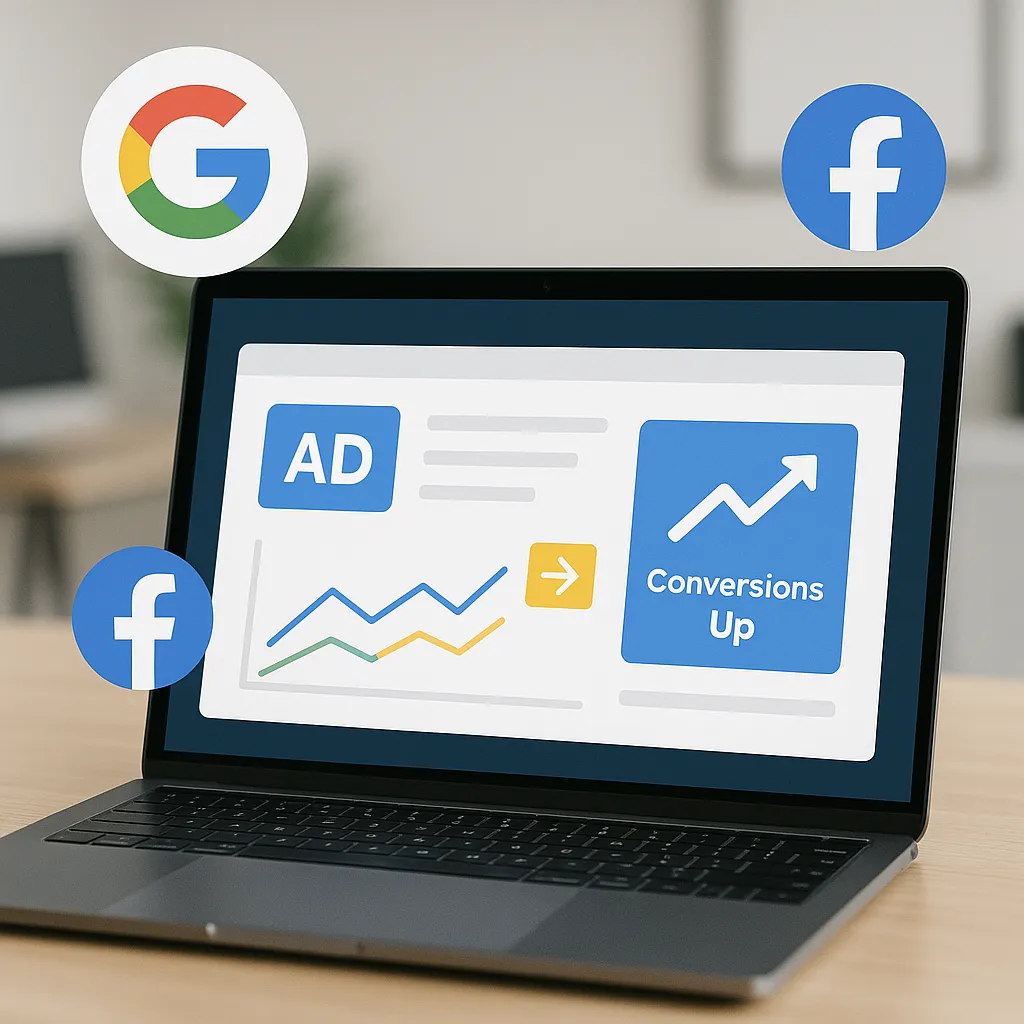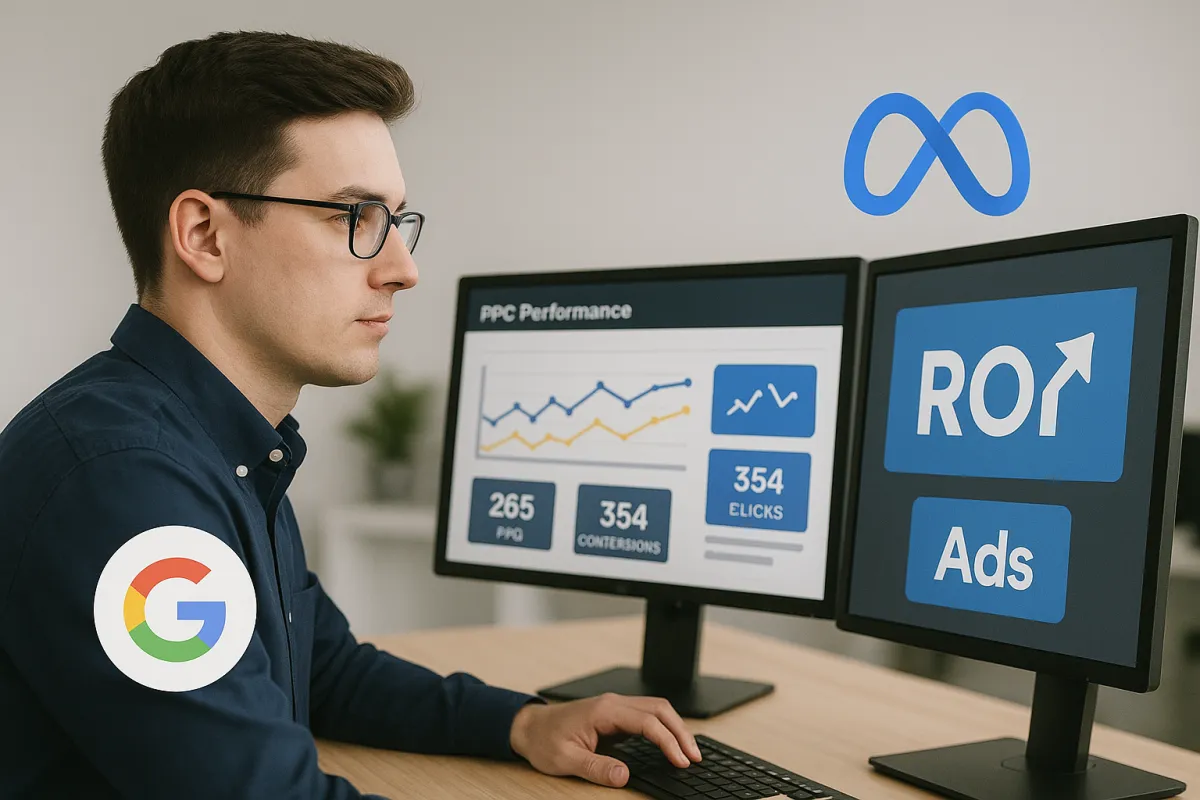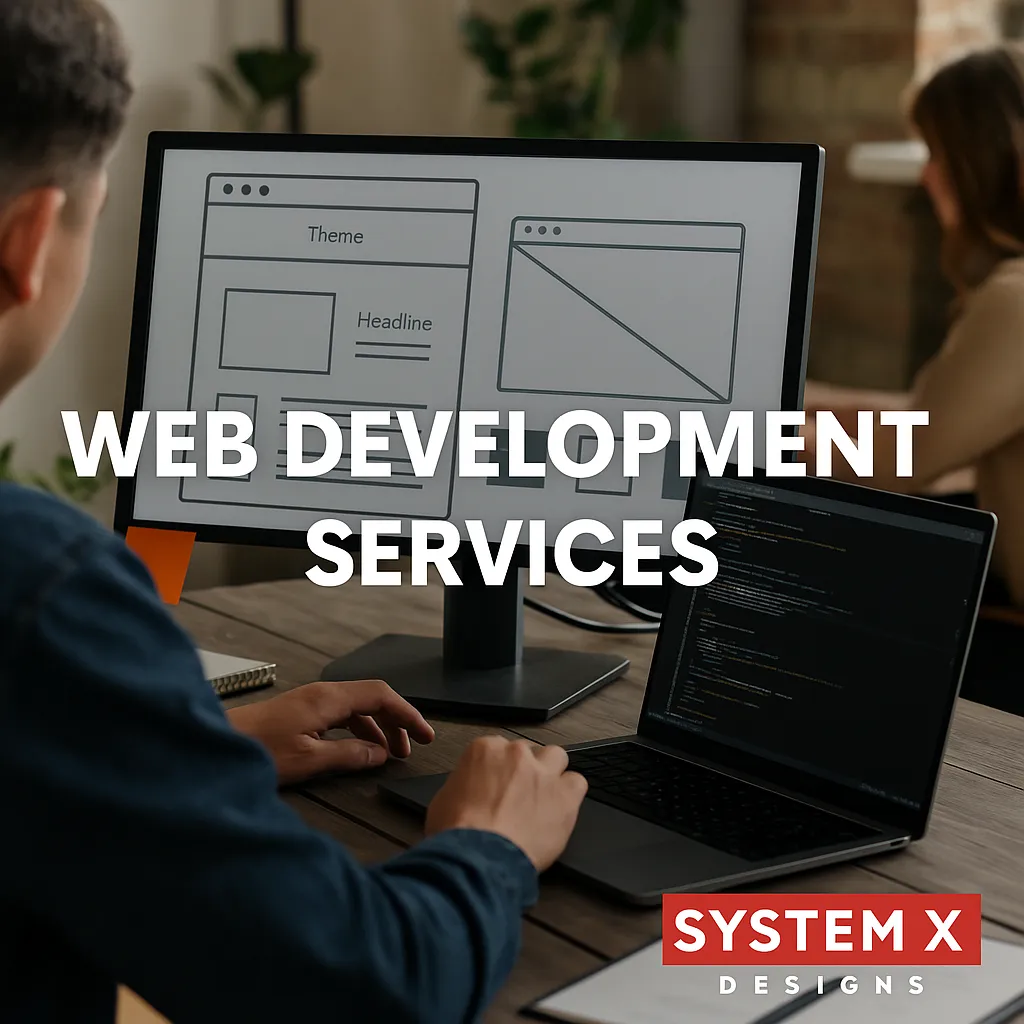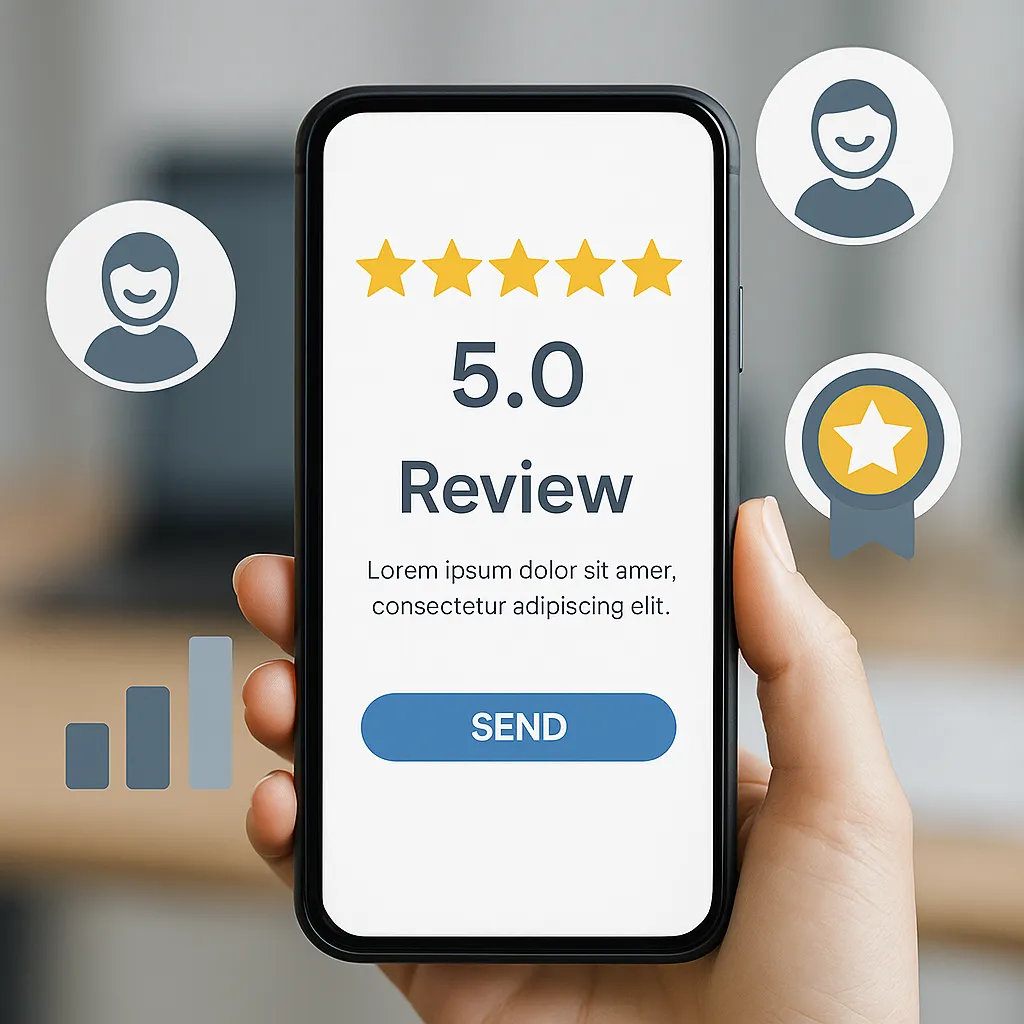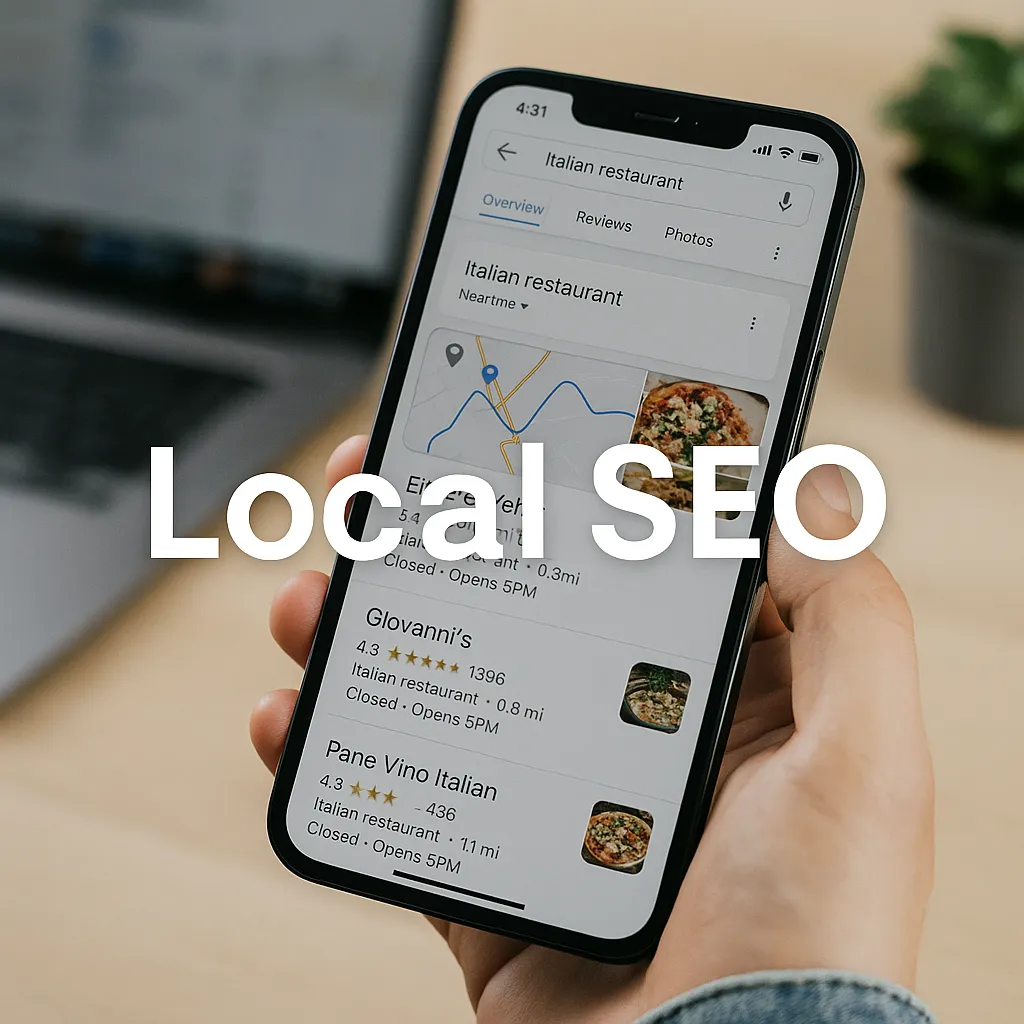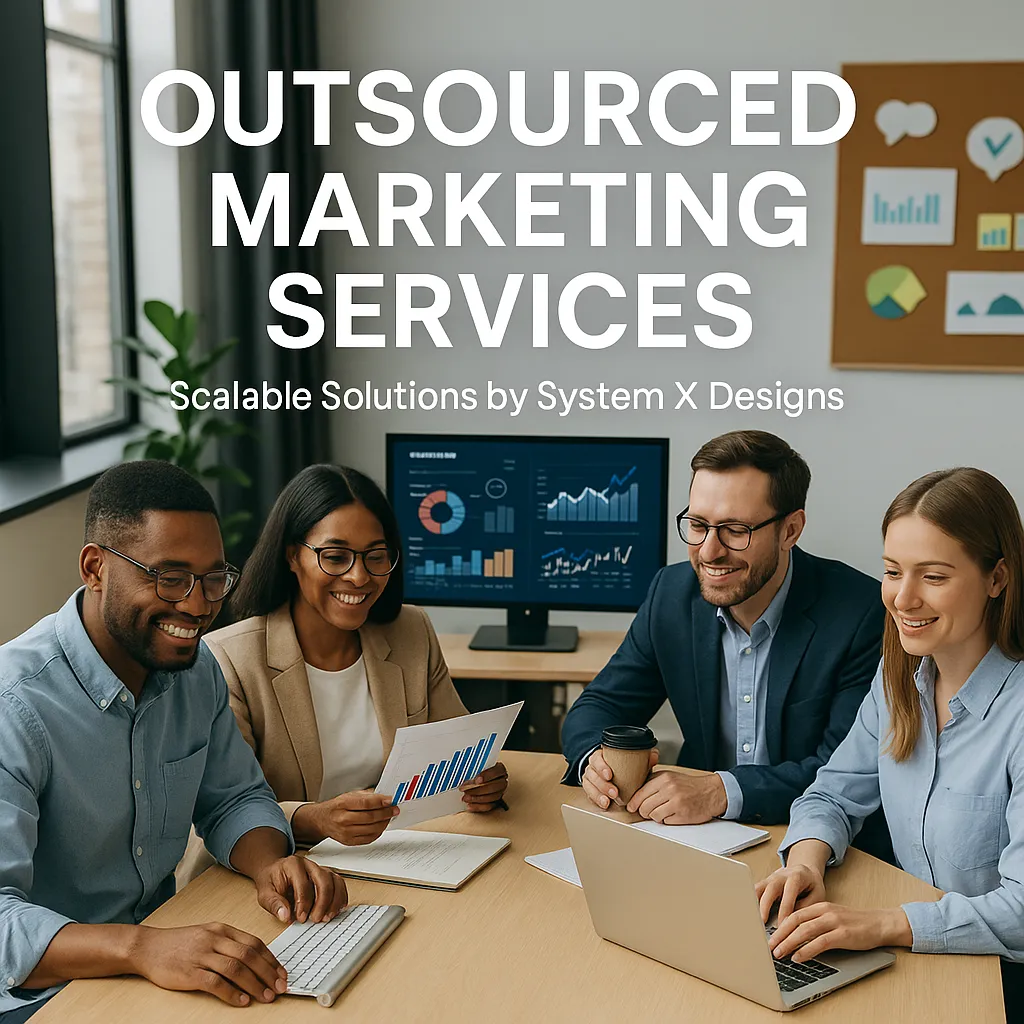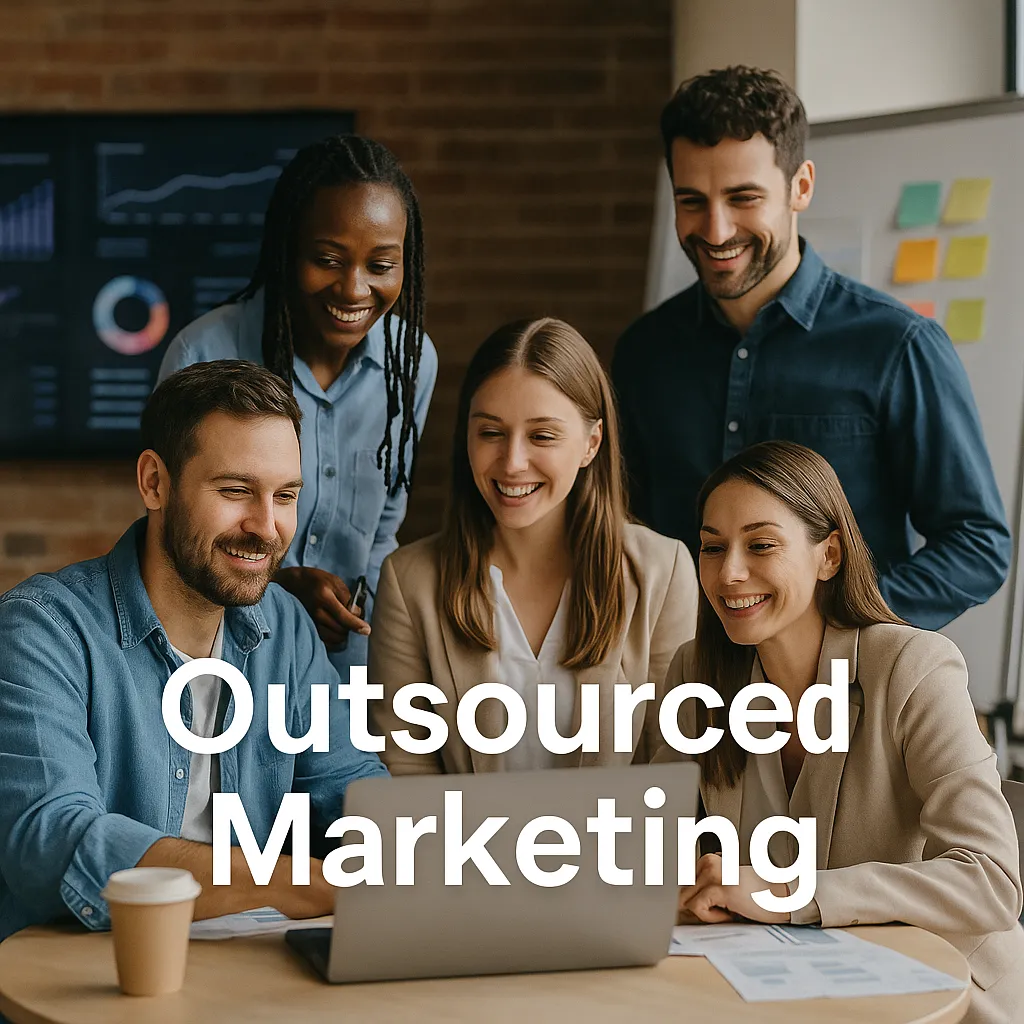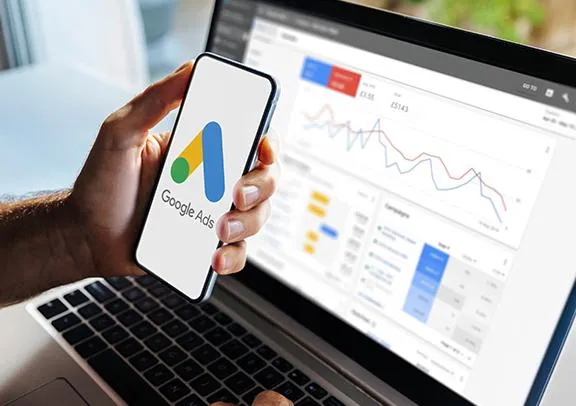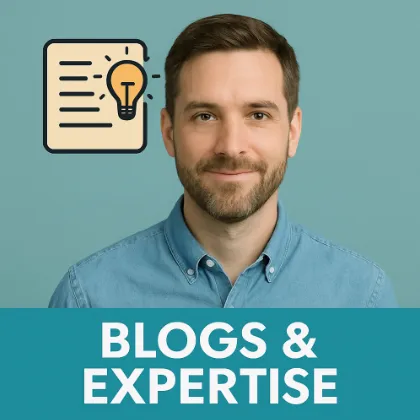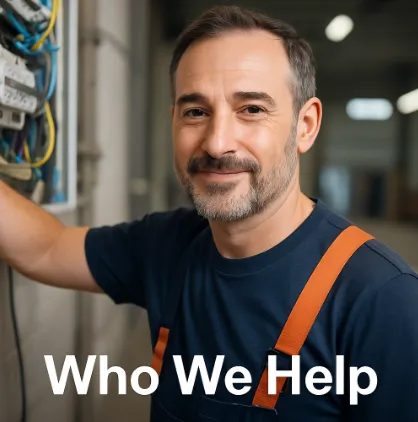Dominating Google's AI Overview: Why Your Local Business Needs Multimedia Content to Rank in 2025

Dominating Google's AI Overview: The Future of Local SEO Is Here
For local businesses competing in high-stakes industries like HVAC, roofing, heavy equipment rental, and manufacturing, visibility isn't just about being found—it's about being chosen. And in 2025, being chosen increasingly means being cited by artificial intelligence.
Google's AI Overview (formerly known as Search Generative Experience or SGE) has fundamentally changed how potential customers discover local service providers. Instead of scrolling through a list of blue links, searchers now see AI-generated summaries that pull information from trusted, authoritative sources and present it conversationally at the top of search results.
If your business isn't optimized to appear in these AI-generated responses, you're effectively invisible to a growing segment of high-intent customers. At System X Designs, we've spent months analyzing what it takes to rank in Google's AI Overview—and we've developed a comprehensive multimedia content strategy specifically designed to get our clients cited by AI systems.
Why AI Overview Matters for Local Businesses
Traditional SEO focused on ranking in the "Maps Pack" (the three local business listings that appear with map pins) and organic search results. While these remain important, AI Overview has introduced a third—and increasingly dominant—way customers find businesses.
Here's what makes AI Overview different:
AI Overview appears above everything else. When triggered, it occupies prime real estate at the very top of search results, pushing even the Maps Pack further down the page.
It directly answers questions. Rather than forcing users to click through to multiple websites, AI Overview synthesizes information and presents it immediately. This means the businesses cited within these overviews gain instant credibility and visibility.
It prioritizes entity authority over traditional ranking factors. Google's AI doesn't just look at backlinks and keywords—it evaluates whether your business is recognized as a legitimate, trustworthy entity across multiple authoritative platforms.
For local businesses in competitive industries, appearing in AI Overview isn't optional—it's the difference between being recommended by Google's AI or being ignored entirely.
What It Takes to Rank in Google's AI Overview
Based on comprehensive analysis from multiple AI systems (ChatGPT, Claude, and Manus) and our own testing with clients, we've identified the core requirements for AI Overview visibility:
1. Entity Authority (Not Just Citations)
Traditional local SEO relied heavily on NAP citations (Name, Address, Phone) across directories like Yelp and Yellow Pages. While these still matter, AI Overview prioritizes entity authority—recognition of your business as a verifiable entity across authoritative, structured sources.
This means having verified profiles on:
Wikidata
LinkedIn company pages
Crunchbase
Better Business Bureau
Local Chamber of Commerce
Industry-specific associations
Government business registries
These platforms help AI systems "understand" your business and trust it as a local authority.
2. Structured, Factual Content
AI systems ignore promotional fluff and sales copy. They cite structured, factual information that can be parsed and reused in AI-generated answers.
This includes:
FAQ sections with direct, conversational answers
Step-by-step guides with numbered lists
Statistics and data with proper citations
Comparison tables
Glossary and definition pages
Content must be written in a journalistic tone—clear, factual, and benefit-driven without being overly promotional.
3. Review Sentiment and Diversity
AI systems don't just count reviews—they analyze them. Sentiment, diversity across platforms, and recency matter more than sheer volume.
This means building reviews across:
Google Business Profile (still the primary driver)
Yelp
Industry-specific platforms (Angi for home services, etc.)
BBB
Facebook
Reviews should be detailed, include specific keywords naturally, and demonstrate consistent positive sentiment.
4. Conversational Content Matching Natural Queries
AI Overview is triggered almost exclusively by informational search queries—people asking questions in natural language.
Your content needs to explicitly answer questions like:
"How much does [service] cost in [city]?"
"What should I do immediately after [problem occurs]?"
"What are the best [service providers] in [city]?"
5. Brand Visibility Across Multiple Platforms
LLMs pull from a wider dataset than traditional search engines. Your brand must be visible across:
Google Business Profile
YouTube (owned by Google, heavily weighted)
Podcast platforms (Apple Podcasts, Spotify, etc.)
Social media (Facebook, Instagram, LinkedIn)
Content aggregators (SlideShare, Medium, etc.)
This omnichannel presence reinforces entity recognition and provides multiple touchpoints for AI systems to reference your business.
The System X Designs Multimedia Approach
At System X Designs, we've developed a comprehensive multimedia content strategy that addresses every requirement for AI Overview visibility. For each campaign, we create a complete content ecosystem built around a single core topic—typically a new service offering, location expansion, or seasonal campaign.
Our Multimedia Content Suite
Each content package includes seven distinct assets, each optimized for different platforms and ranking opportunities:
1. Press Release
We create and distribute a professionally written press release to hundreds of syndicated news outlets. This isn't the old-school, keyword-stuffed press release of the past—these are newsworthy announcements written in journalistic style that establish your business as a credible, active entity.
2. Blog Article
We repurpose the press release content into a structured blog article hosted on our Local Business Wire website. This version includes proper heading structure (H2/H3), embedded media, and schema markup—all elements that help AI systems parse and cite the content.
The blog article serves as a high-authority backlink and can be used for tiered backlinking strategies.
3. Infographic
Visual content with structured data representation, optimized alt text, and geo-relevant metadata. We distribute infographics across photo-sharing platforms like Flickr, Pinterest, and Imgur.
AI systems can parse image metadata and surrounding text, making infographics valuable for entity recognition.
4. SlideShow Presentation
Slide decks repackage information into scannable, structured formats. Each slide includes headers, bullet points, and data points that AI systems can extract and cite.
We distribute slideshows to platforms like SlideShare, Scribd, Medium, Issuu, and Behance.
5. Short-Form Video
Optimized for social media platforms (Instagram Reels, Facebook, TikTok, YouTube Shorts, LinkedIn), these videos provide quick, engaging content that drives brand visibility across multiple channels.
6. Long-Form Video
Hosted on YouTube and Vimeo with optimized descriptions that include full NAP (Name, Address, Phone), website URL, and relevant keywords. YouTube transcriptions are indexed by Google and used by AI systems, making video content extremely valuable for entity recognition.
Each video description includes backlinks and structured business information.
7. Podcast Interview
We immediately distribute podcast episodes to major platforms including Apple Podcasts, Spotify, Amazon Music, iHeartRadio, YouTube Music, Podbean, Player FM, Listen Notes, Podchaser, and Boomplay.
Podcast transcriptions are ingested by AI systems, and episode descriptions with structured NAP information strengthen local relevance.
Why This Multimedia Strategy Works for AI Overview
Our approach directly addresses the core requirements identified by all three AI systems we consulted:
Multi-Platform Entity Signals
By distributing content across hundreds of platforms—from news sites to YouTube to podcast directories—we create a network of interconnected brand signals. Each piece of content includes consistent NAP information and links back to your Google Business Profile and website.
This distributed citation strategy is exactly what AI systems look for when establishing entity authority. You're not just a website trying to rank—you're a verified, multi-platform entity with a substantial digital footprint.
Structured, LLM-Parseable Content
Every asset we create is optimized for AI consumption:
Infographics and slideshows present data in visual, scannable formats with clear headers and bullet points
Videos and podcasts include detailed descriptions with structured NAP and keyword-rich content, plus transcriptions that AI can index
Blog articles follow proper semantic HTML structure with schema markup
This isn't content created for humans to read and then hope Google ranks it—this is content specifically designed to be parsed, understood, and cited by AI systems.
Authoritative Backlinks at Scale
Each multimedia asset generates backlinks from high-authority domains:
Press releases syndicate to hundreds of news outlets
Videos host on YouTube and Vimeo
Podcasts distribute to major streaming platforms
Slideshows appear on content authority sites
Infographics get shared across visual platforms
These aren't low-quality spam links—they're natural mentions from platforms that AI systems explicitly trust and reference.
Conversational, Query-Matching Content
Our content explicitly answers the types of questions that trigger AI Overview:
"What [services] are available in [city]?"
"How much does [service] cost?"
"What should I know about [industry topic]?"
We structure content around FAQ formats, step-by-step guides, and factual explanations—exactly the content types that AI systems prefer to cite.
Continuous Entity Reinforcement
Perhaps most importantly, our multimedia approach creates content layers—not just individual pages hoping to rank.
For a single campaign, you get:
Press Release → syndicated to 200+ news outlets
Blog Article → high-authority backlink
Video → YouTube visibility + Google indexing
Podcast → multiple platform distribution
Infographic → visual sharing across platforms
SlideShow → structured data representation
This layered approach reinforces topical relevance across formats and establishes omnichannel trust. It's the type of comprehensive entity presence that AI systems require before citing a business as authoritative.
The Bottom Line: Build an Entity, Not Just a Website
Traditional SEO focused on optimizing individual pages for specific keywords. That approach is increasingly obsolete.
The businesses that dominate AI Overview aren't just ranking for keywords—they're building comprehensive digital entities recognized across multiple authoritative platforms. They're creating structured, factual content that AI can confidently cite. They're generating diverse review signals that demonstrate trustworthiness. They're visible everywhere potential customers look.
At System X Designs, we've built our entire service model around this reality. Our multimedia content strategy isn't a "nice to have"—it's the foundation of modern local SEO.
We work specifically with local businesses in high-dollar industries where being chosen by AI systems translates directly to revenue: HVAC companies, roofing contractors, heavy equipment rental, manufacturers, and similar service providers where the lifetime value of a customer justifies investing in comprehensive entity building.
If you're ready to dominate not just the Maps Pack but also AI Overview—to become the business that Google's AI recommends when customers ask where to find the best service providers in your area—it's time to build a real entity, distribute structured content across every relevant platform, and establish the authority signals that AI systems demand.
Because in 2025, being found isn't enough. You need to be cited, recommended, and trusted by the AI systems that are rapidly becoming the primary way customers discover local businesses.
And that requires a fundamentally different approach to content—one built on multimedia distribution, entity authority, and structured information designed specifically for AI consumption.
That's exactly what System X Designs delivers.

